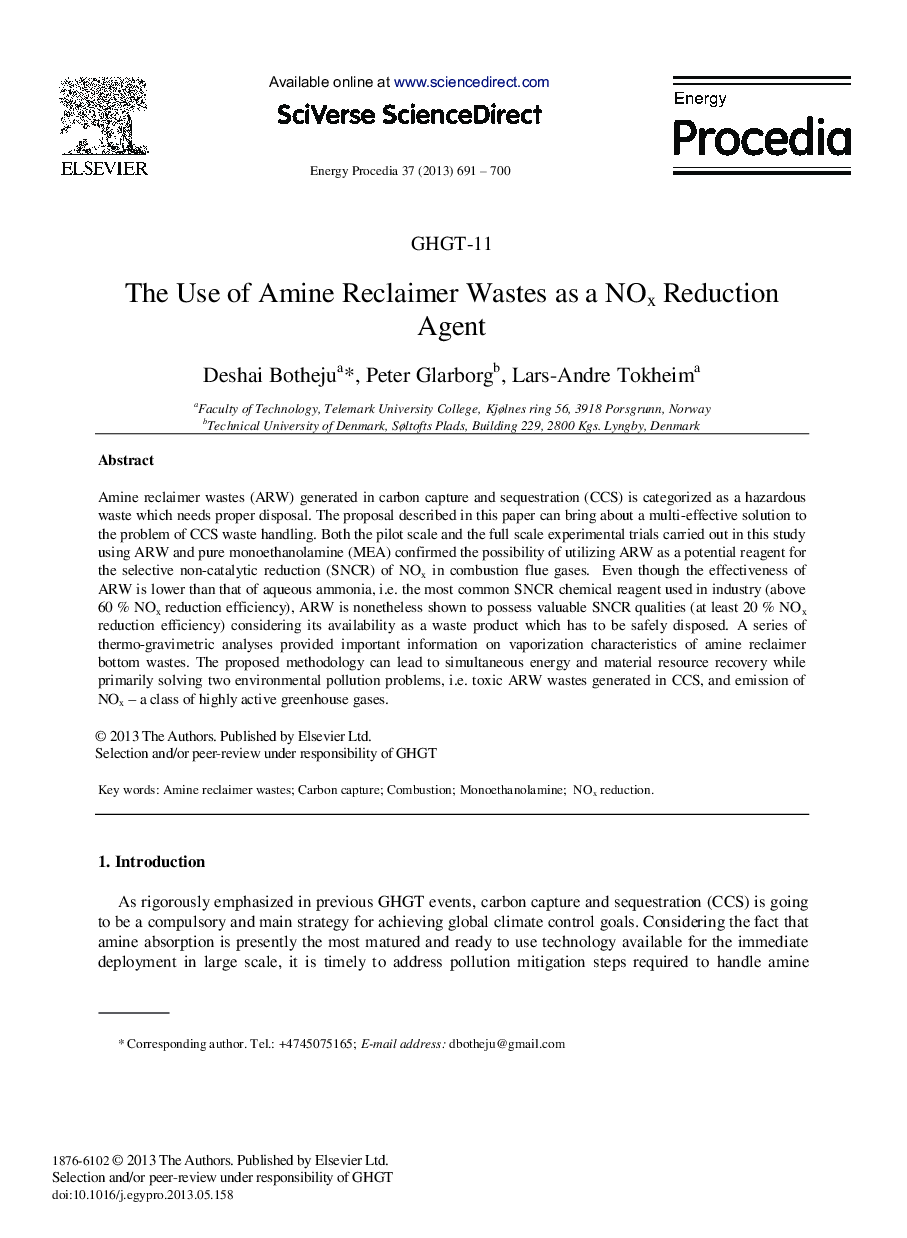| Article ID | Journal | Published Year | Pages | File Type |
|---|---|---|---|---|
| 1512871 | Energy Procedia | 2013 | 10 Pages |
Amine reclaimer wastes (ARW) generated in carbon capture and sequestration (CCS) is categorized as a hazardous waste which needs proper disposal. The proposal described in this paper can bring about a multi-effective solution to the problem of CCS waste handling. Both the pilot scale and the full scale experimental trials carried out in this study using ARW and pure monoethanolamine (MEA) confirmed the possibility of utilizing ARW as a potential reagent for the selective non-catalytic reduction (SNCR) of NOx in combustion flue gases. Even though the effectiveness of ARW is lower than that of aqueous ammonia, i.e. the most common SNCR chemical reagent used in industry (above 60% NOx reduction efficiency), ARW is nonetheless shown to possess valuable SNCR qualities (at least 20% NOx reduction efficiency) considering its availability as a waste product which has to be safely disposed. A series of thermo-gravimetric analyses provided important information on vaporization characteristics of amine reclaimer bottom wastes. The proposed methodology can lead to simultaneous energy and material resource recovery while primarily solving two environmental pollution problems, i.e. toxic ARW wastes generated in CCS, and emission of NOx a class of highly active greenhouse gases.
